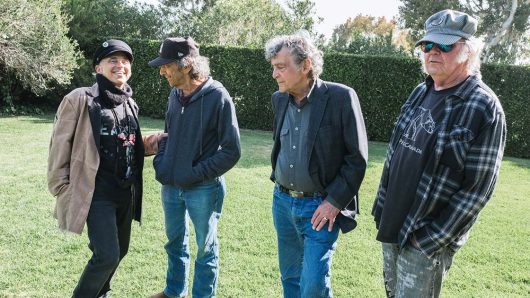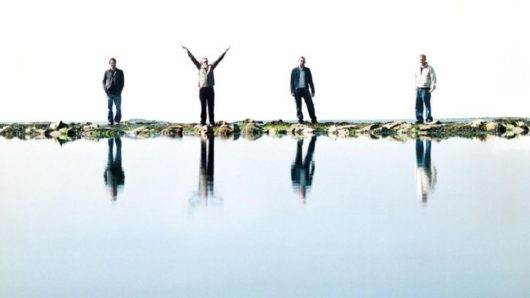By the time Jethro Tull set about recording their landmark fourth album, Aqualung, the group needed a moment to catch their breath. The success of Aqualung’s predecessor, Benefit, had kept them on the road extensively throughout Europe and the US, but left them on the verge of collapse. Bassist Glenn Cornick was on his way out the door (to be replaced by the relatively untested Jeffrey Hammond) when rehearsals for the new album begin in June 1970, and drummer Clive Bunker, increasingly feeling the strain of the band’s gruelling touring schedule, wouldn’t be far behind.
“We were a bit exhausted,” Ian Anderson, singer, guitarist, flautist and principal architect of Jethro Tull tells Dig! “I, for one, as a songwriter and producer and whatever else, was feeling a bit jaded.” Though Benefit had helped Jethro Tull gain a reputation as a formidable live band on the burgeoning prog-rock scene, Anderson wanted to take his songwriting in a new direction for its follow-up and viewed Aqualung as “an opportunity to write something of a social documentary”.
“This was the one that was either going to mark the beginning of the decline,” he says, “or it would be another step on the ladder.”
Listen to Aqualung here.
“We judge things in the context of our own lives”
“I wanted to make more of a mark as a singer-songwriter,” Anderson reveals of his approach to what would become Jethro Tull’s most-loved album. “The tinselly, heart-on-sleeve, ‘I’, ‘me’ kind of work is not usually my forte.” Rather, Anderson was more interested in writing “things that, lyrically speaking, were a bit more relevant and hard-hitting, and not based on the more universal themes of love, lust, sex, drugs and whatever”.
Having always been drawn to the idea of photography as a form of social commentary, it’s fitting that photos taken by Anderson’s wife, of destitute people along London’s River Thames, inspired Aqualung’s title track: a character portrait of a homeless man whose breath rattles with “deep-sea-diver sounds” as he lives out his final days. “It’s always interesting to see something that the artist is privileged to see,” Anderson says, “whether it’s in a brothel or a strip club, or on a sunny afternoon having a picnic on the grass – there’s something that draws you into the apparent everyday, commonplace, but through the eyes of a painter or photographer or, indeed, a songwriter… It’s a bit like a theatrical stage: you have a context bound by a proscenium arch, for people and characters to bring life to you.”
It’s a sad indictment of our times that, over 50 years since Aqualung’s release, homelessness has only increased on a global scale, yet Anderson’s engagement with the issue – along with songs such as Locomotive Breath and Hymn 43, which, respectively, saw him tackle overpopulation and what he saw as hypocrisies in organised religion – has, in the long-term, ensured that Aqualung continues to resonate.




